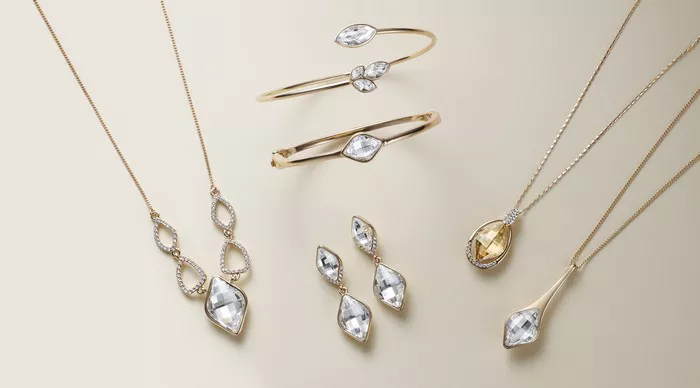Swarovski crystals are renowned for their superior quality, precision cut, and brilliant shine. Founded by Daniel Swarovski in 1895, the Swarovski brand has become synonymous with luxury and elegance. Given their popularity, it’s no surprise that counterfeit Swarovski crystals have proliferated in the market. This guide aims to help you differentiate genuine Swarovski crystals from imitations by focusing on various distinguishing features.
1. Understanding Swarovski’s Craftsmanship
Swarovski crystals are produced using a proprietary formula and precision-cutting technology. Here are some key aspects of their craftsmanship:
Raw Materials: Swarovski uses high-quality raw materials that result in crystals with exceptional clarity and brilliance. Imitations often lack this clarity and might have visible impurities.
Cutting Technique: Each Swarovski crystal is cut using state-of-the-art machinery that ensures precise facets and a consistent shape. This results in a uniformity that fakes rarely achieve.
Coatings and Finishes: Swarovski offers various coatings such as Aurora Borealis (AB), which gives the crystals a unique iridescent finish. Fake crystals often have uneven or easily chipped coatings.
2. Examining the Physical Appearance
The most obvious way to distinguish genuine Swarovski crystals from fakes is by closely examining their physical appearance.
Clarity and Sparkle: Authentic Swarovski crystals are known for their flawless clarity and exceptional sparkle. They have no bubbles, scratches, or oily sheen. Fakes might have visible imperfections and a duller sparkle.
Color Consistency: Swarovski crystals are available in a wide range of colors, all of which are vibrant and consistent throughout the crystal. Imitations often have inconsistent coloring or a faded appearance.
Facet Precision: Genuine Swarovski crystals have sharp, well-defined facets that create a high level of brilliance. The facets on counterfeit crystals are often uneven or poorly cut.
3. Inspecting the Branding and Packaging
Swarovski takes great care in branding and packaging its products, providing another layer of authenticity verification.
Swarovski Logo: Authentic Swarovski crystals come with a laser-etched logo. This logo is often found on the side or underside of the crystal. Use a magnifying glass to check for this tiny, yet distinctive mark.
Packaging: Genuine Swarovski products come in high-quality packaging, which often includes a hologram seal, a certificate of authenticity, and detailed product information. Counterfeit products may lack these features or have poorly printed packaging.
4. Verifying the Vendor
Where you purchase your Swarovski crystals can greatly impact the likelihood of getting genuine products.
Authorized Retailers: Always buy from authorized Swarovski retailers or the official Swarovski website. These sellers guarantee the authenticity of their products.
Suspiciously Low Prices: If the price seems too good to be true, it probably is. Authentic Swarovski crystals come with a price tag that reflects their quality. Be wary of significant discounts or unusually low prices.
Return Policy: Reputable sellers will offer a return policy for their products. If the seller does not allow returns or offers limited guarantees, it might be a red flag.
5. Comparing with Known Genuine Products
If you already own genuine Swarovski crystals, use them as a benchmark to compare with new purchases.
Direct Comparison: Place the suspected fake crystal next to a known genuine Swarovski crystal. Compare aspects such as sparkle, clarity, and cut. Genuine Swarovski crystals should outshine the fake ones in every aspect.
Feel and Weight: Authentic Swarovski crystals have a certain weight and feel due to their high lead content and precise cutting. Counterfeit crystals might feel lighter or have a different texture.
See Also: Is Lavender Jade Valuable: What You Should Know
6. Seeking Expert Opinion
When in doubt, seek the opinion of a jewelry expert or a professional appraiser.
Jewelry Appraisers: Professional appraisers have the expertise and equipment to accurately assess the authenticity of Swarovski crystals. They can provide a detailed analysis and certification.
Customer Reviews and Feedback: Before making a purchase, check customer reviews and feedback on the seller. Authentic sellers usually have positive reviews and a strong reputation.
7. Utilizing Technological Tools
With advances in technology, there are now tools that can help in verifying the authenticity of Swarovski crystals.
Magnification Tools: Use a jeweler’s loupe or a microscope to closely inspect the facets and internal structure of the crystal. Genuine Swarovski crystals will display a precision and uniformity not found in fakes.
UV Light Test: Some Swarovski crystals exhibit a slight glow under UV light due to their specific coatings and materials. This test can be an additional tool in distinguishing them from fakes.
Conclusion
Spotting fake Swarovski crystals requires a keen eye for detail and knowledge of the key characteristics of genuine Swarovski craftsmanship. By understanding the distinctions in appearance, verifying branding and packaging, purchasing from authorized vendors, and utilizing expert opinions and technological tools, you can confidently identify authentic Swarovski crystals. Always remember that the allure of Swarovski lies in its unmatched quality and brilliance, and ensuring authenticity will allow you to fully enjoy the beauty and luxury that Swarovski crystals bring.

